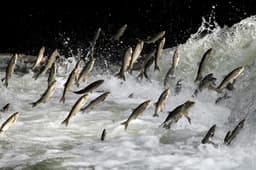Home / Science / Russian Scientists Develop Real-Time Frozen Soil Tracking System
Russian Scientists Develop Real-Time Frozen Soil Tracking System
14 Nov
Summary
- Rapid monitoring of frozen soils to observe changes in real-time
- Shallow wells with sensitive sensors to scan soil conditions
- Technology helps prevent accidents and minimize damage to buildings and roads
On November 14, 2025, the Russian Academy of Sciences' Institute of Petroleum Geology and Geophysics announced the development of a new technology for rapid monitoring of frozen soils. This innovative system allows scientists to observe changes in the soil in real-time and respond more quickly to prevent potential disasters.
Traditionally, soil temperature monitoring has been done by drilling wells and placing sensors inside. However, this method has a significant drawback - the thermal fluctuations reach the sensors slowly, delaying the availability of critical information. The new approach involves drilling shallow wells, just a few to dozens of meters deep, and installing highly sensitive sensors. These sensors use a combination of traditional induction coils and less common current lines to scan the space between neighboring wells, accurately detecting changes in the soil.
The technology pays special attention to the upper thawed layer, as it is crucial for monitoring potential risks to buildings and roads. By tracking the soil's electrical resistance, scientists can determine the degree of thawing and identify any areas of concern. Computer software is used to generate visual graphs and maps, allowing the team to quickly identify and address problem areas.
The collected data can be transmitted remotely, enabling specialists to process and analyze the information in real-time. This allows for prompt decision-making, such as recommending evacuations or initiating infrastructure repairs, to minimize potential damage. Scientists are currently conducting practical tests to ensure the effectiveness of this innovative soil monitoring system.




